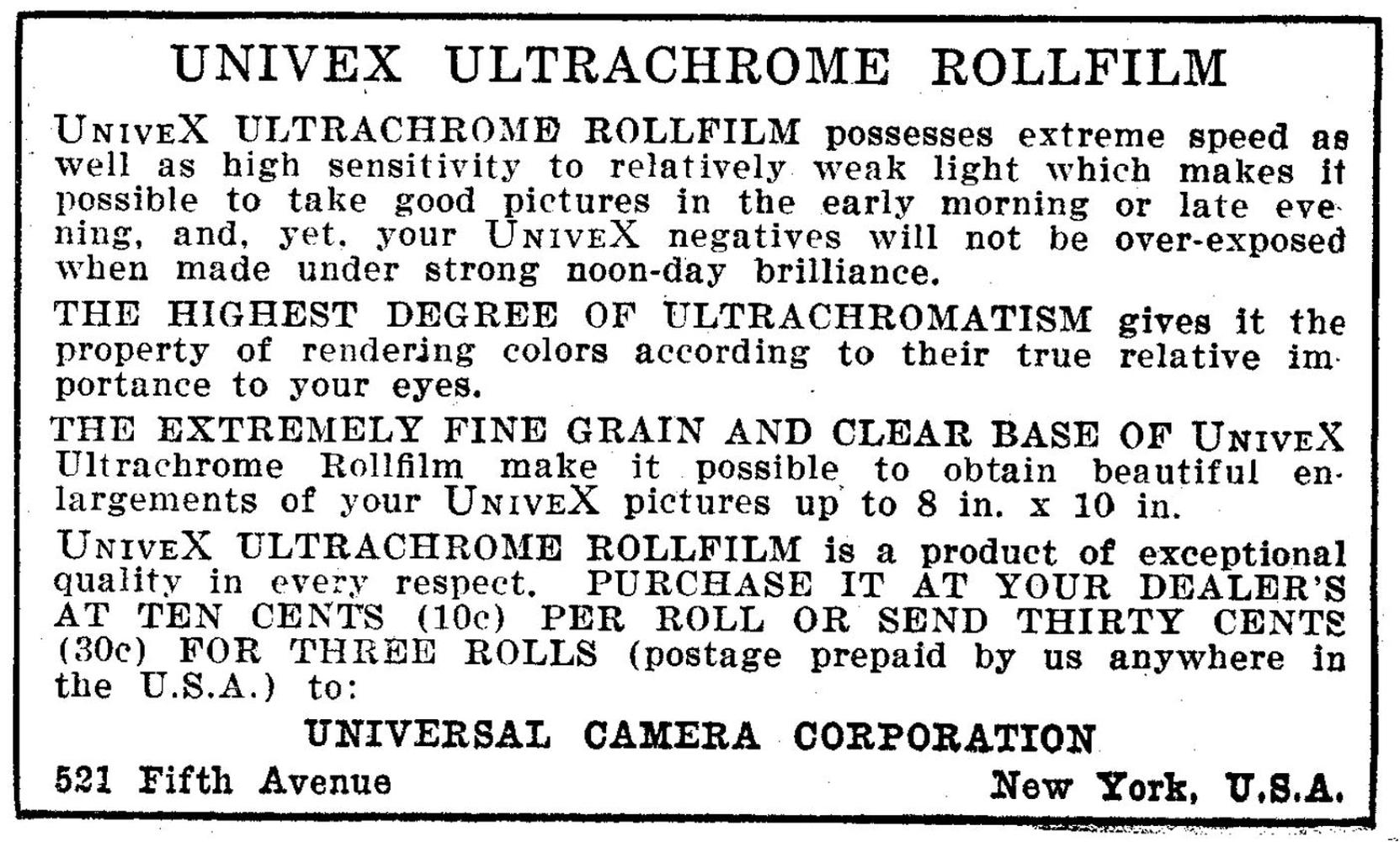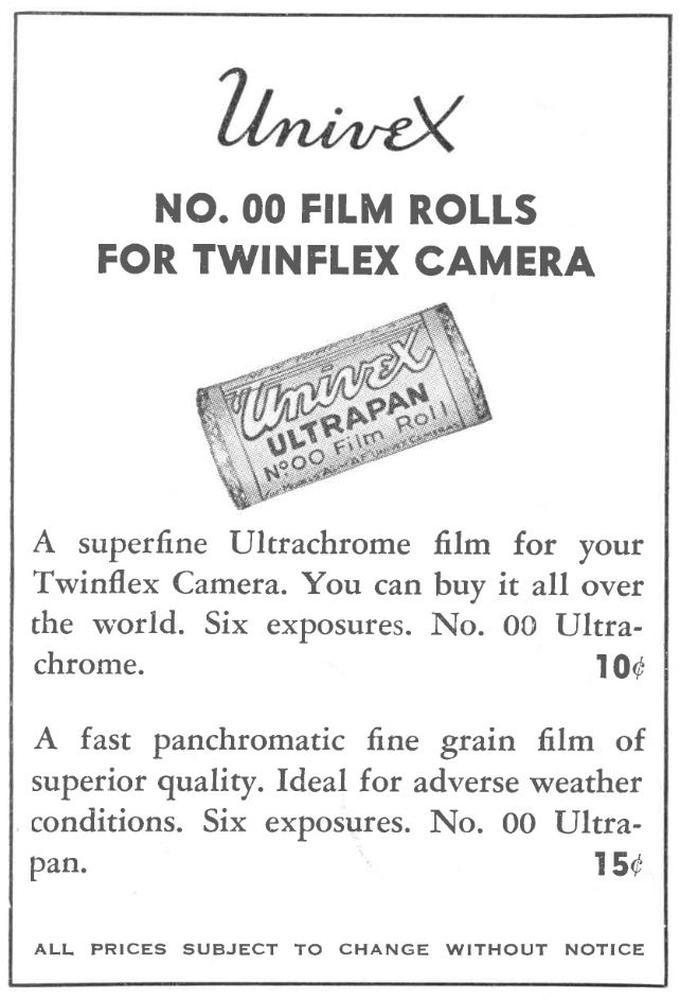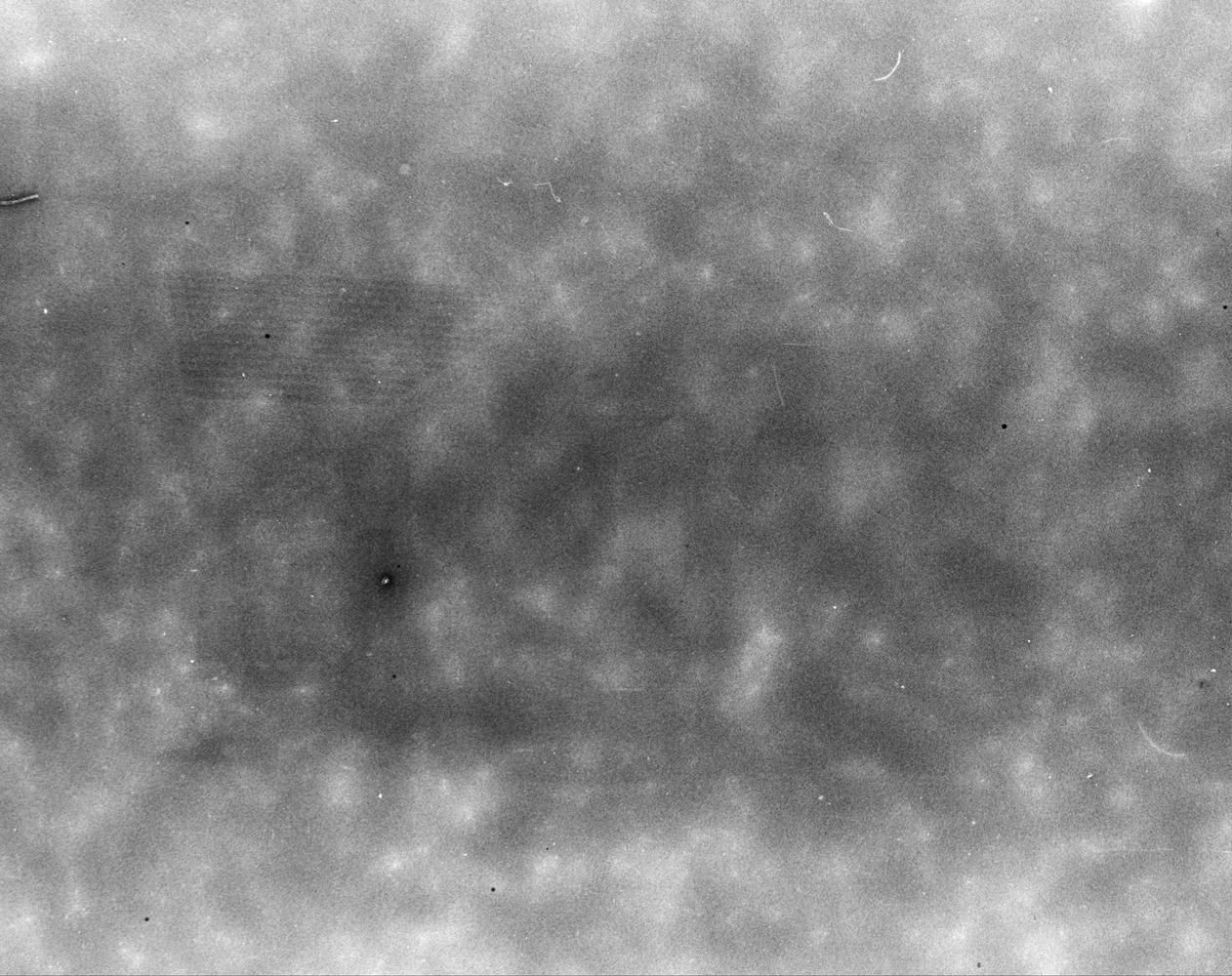Univex Ultrachrome № 00
Univex is an interesting and now rare film format that was introduced by the Universal Camera Corporation, USA, in 1933 and remained in production till the 1960s. I was lucky to find two rolls of exposed and undeveloped rolls of Univex Ultrachrome № 00 in their original boxes with the "develop before" date of December 1948.
The Universal Camera Corporation made no secret that they did not manufacture the film themselves and used the services of Gevaert in Belgium.

Univex № 00 film could only be used in several very simple cameras produced by the company, including Iris, Model A, AF and AF-2, Uniflash and a primitive twin lens reflex model called Twinflex. Apart from the unique spool with a V-shape notch on top, Univex is a typical roll film taking six 1 1/2" × 1 1/8" (28 x 38 mm) exposures per roll. The actual film is 30.7 mm wide and about 30 cm long.
The instruction manual for the Twinflex camera mentions two films available for this camera: Univex Ultrachrome and a faster Ultrapan.

The film speed was not provided, but it was not required for taking snapshots with a camera having a single shutter speed (plus Bulb) and a fixed-aperture lens.
If you decide to develop Univex № 00 you have to solve two technical problems: find a way to load it into a development tank, and determine development time in the developer of your choice. The first challenge was solved by making a custom spacer for the Universal Development tank that was produced in the USSR in the 80s and could be easily found on popular online auction sites. The spacer was made by cutting a 16.4 mm long piece from a 20 mm PVC pipe. A snip-test gave development time of about 6 minutes in Kodak HC-110 dilution B at 18°C.
Unfortunately, no images could be recovered from the films which is not surprising given they are at least 76 years old. This seems to be the limit to how long the latent images could survive under normal storage conditions. Other films of this era like Kodak Verichrome dated November 1946 and February 1946 show severe degradation and required a lot of post-processing to rescue the images.
The frame below is the only one from the two rolls that shows at least some traces of the image.

I would like to thank Mike Reitsma (California, USA) for sourcing and sending me the films and his support of the project, as well as fellow photography history enthusiasts at Argus Museum in Ann Arbor, Michigan.